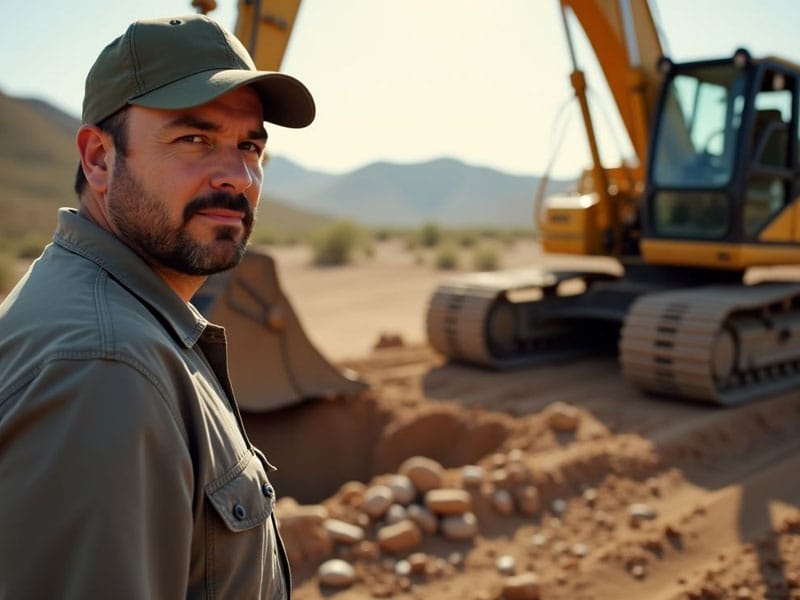
The Complete Guide to Trenching Safety Protocols for Arizona’s Rocky Soil
Digging in Arizona’s rocky soil can be tough and risky.
The hard ground and risks like soil erosion and dust storms make trenching a real challenge.
This guide will walk you through key safety protocols to protect your project and the environment.
Key Takeaways
- Due to compact dirt, dust storms, and erosion, Arizona’s rocky soil makes trenching tough and risky. For better results, use heavy machinery like trenchers or rock hammers.
- Trenches deeper than 5 feet need protective systems like shoring, trench boxes, or sloping to prevent collapses. For safety, follow OSHA rules.
- To avoid accidents, keep spoils at least two feet from trench edges. Store tools and machinery on stable ground away from work zones.
- To reduce shifting risks during excavation, stabilize rocky soil by adding gravel, cement treatments, or geotextiles.
- Always check local permits and follow regulations before digging. Call 811 to mark underground utilities for safe trenching in Arizona’s terrain.
Key Challenges of Trenching in Arizona’s Rocky Soil
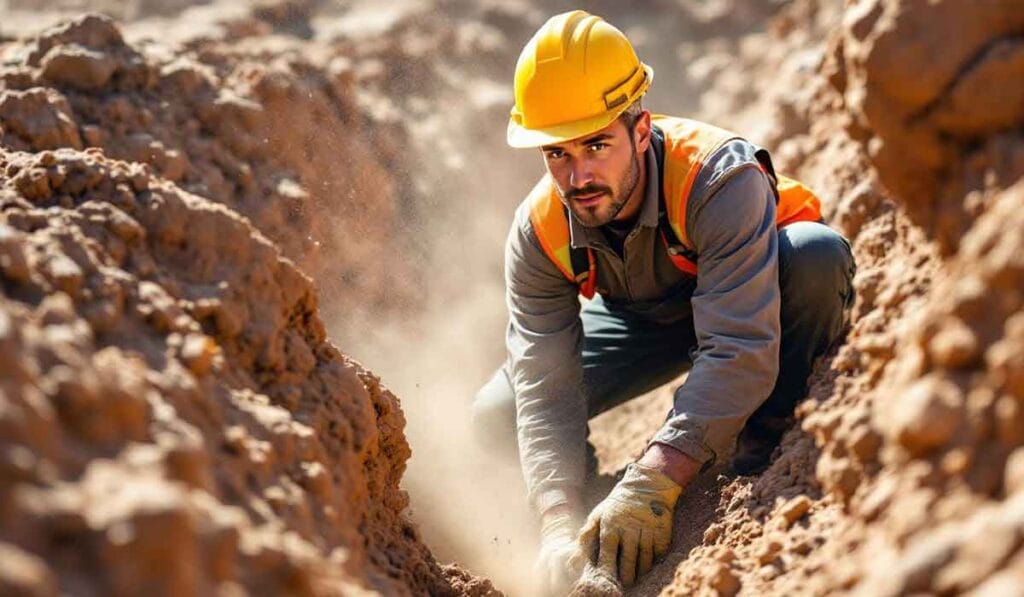
Hard, compact soil conditions
Digging through Arizona’s rocky, hard soil is tough.
The compact dirt often requires heavy machinery like trenchers or rock saws to break through the dense layers.
This soil type can slow down your project and wear out tools faster.
High soil density means water runoff may also be an issue.
Trenching in these conditions could increase risks like flooding if not managed well.
Soil stabilization methods, such as adding gravel or sand, help improve safety and reduce shifting while working.
Risks of soil erosion and dust storms
Arizona’s rocky soil often faces risks from erosion and dust storms.
Loose soil exposed by trenching or digging can wash away during rains, leading to unstable ground and damaging the surrounding ecosystem.
High winds stir up fine particles, creating harmful dust clouds.
These storms impact air quality and require strong dust control measures.
You must include methods like watering soil or using barriers for dust suppression while working in areas like Gila.
Trenching Safety Measures
Always secure the trench walls to prevent collapses, especially in rocky or compact soil.
For added safety, keep heavy machines and soil piles well away from the edges.
Protective systems for trenches over 5 feet deep
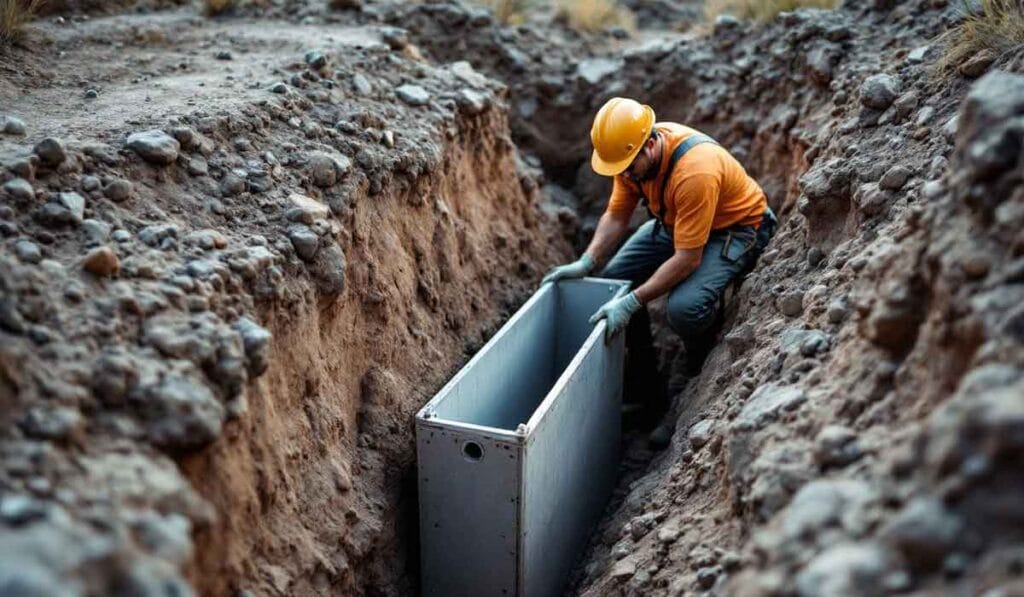
Trenches over 5 feet deep need strong protective systems.
To prevent collapses, trench boxes or shoring can be used.
These options brace the walls and protect workers inside.
Sloping is another method where the sides of the trench are angled to reduce pressure.
Arizona’s hard rock terrain makes this even more critical.
Rocky soil might seem stable but can shift unexpectedly, especially near natural gas lines or during heavy equipment use.
Ensure safety rules match OSHA standards to avoid risks from unstable ground conditions.
Proper placement of spoils and equipment
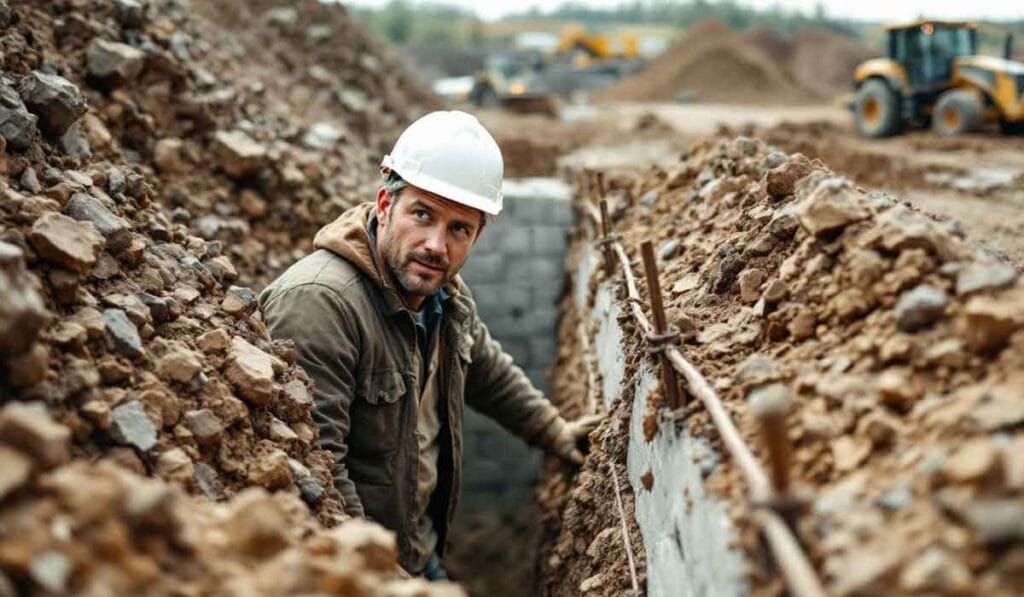
Keep spoils at least two feet from the trench edges.
This prevents soil or debris from falling into the trench, which could harm workers or damage equipment.
Place heavy machinery on stable ground away from weak areas to avoid collapses.
Store tools and materials in an organized area outside of work zones.
This reduces trip hazards and keeps your worksite safe.
Proper planning ensures efficiency and lowers risks for everyone involved.
Safety begins with smart planning—protect your team by securing the site first.
Advanced Techniques for Excavating Rocky Terrain
Working with rocky soil needs strong tools and the right methods.
You can manage tough ground better by choosing equipment fit for hard surfaces.
Use of specialized machinery
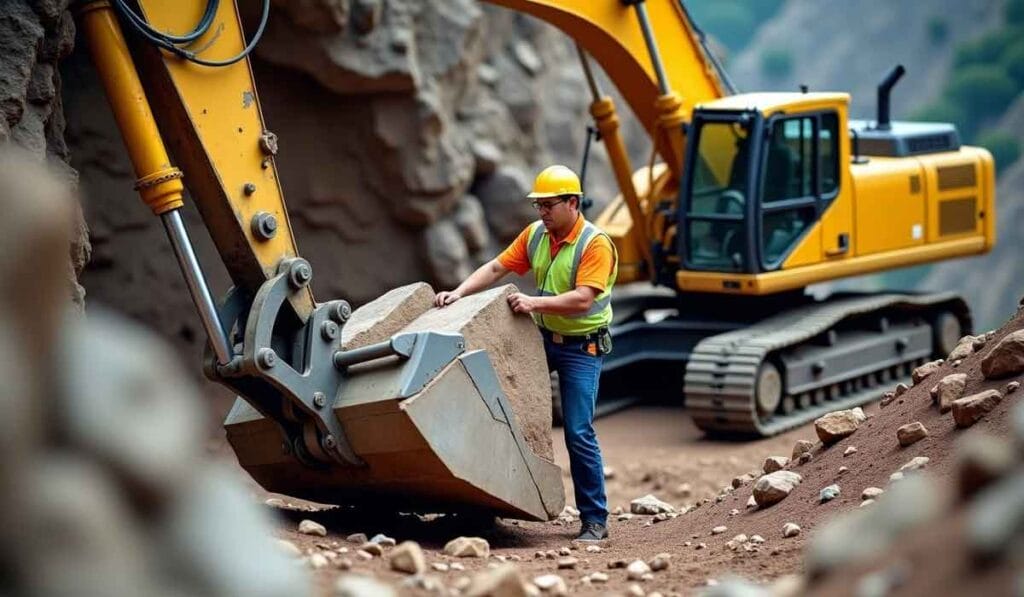
Excavating Arizona’s rocky soil requires the right tools.
Machines like hydraulic excavators, trenchers, and rock hammers can easily break through hard surfaces.
Compared to manual digging, these tools save time and reduce risks.
Specialized machinery also handles large rocks that compact soil holds tightly.
Using them helps stabilize trenches and prevents collapses.
Investing in proper equipment ensures safer work on your property while reducing environmental impact.
Soil stabilization methods
Chemical treatments like lime or cement can stabilize rocky soil.
These materials mix with the soil, making it stronger and less likely to shift.
This process works well for digging trenches in Arizona’s hard terrain.
Another option is installing geotextiles under the trench area.
These fabric layers help hold the ground together and prevent collapse.
Both methods reduce risks while improving safety during excavation work on your property in Arizona.
Legal and Environmental Considerations
Follow trenching laws to keep your project safe and legal.
Check environmental rules to avoid harming the land or air quality.
Compliance with OSHA standards
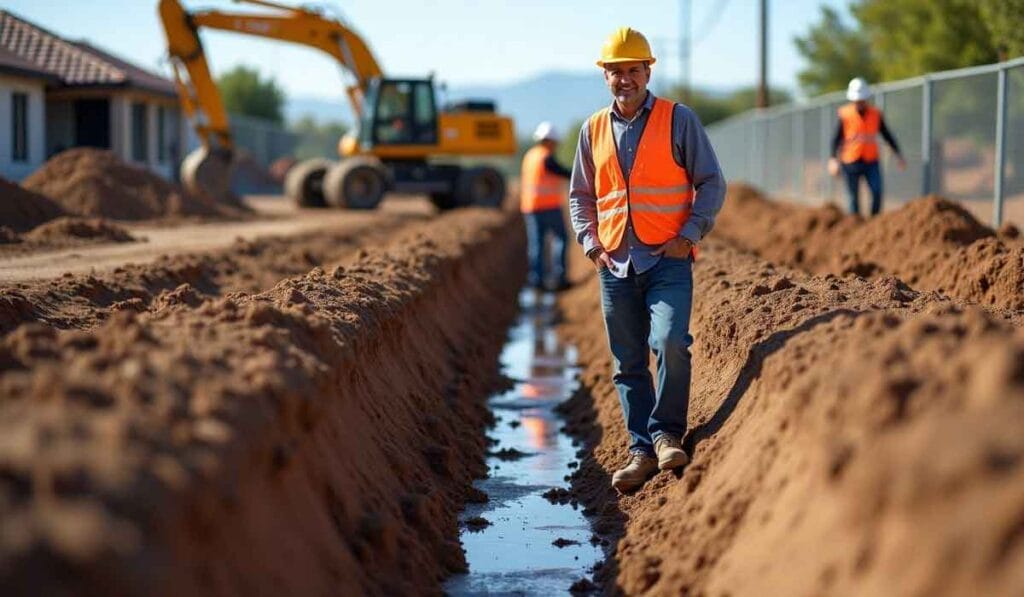
You must follow OSHA rules for trenching to keep workers safe and avoid fines.
As mentioned above, trenches deeper than 5 feet need protective systems like shoring, shielding, or sloping.
These methods stop cave-ins and protect anyone working below.
Keep heavy equipment and spoils at least 2 feet from the edge of the trench.
This prevents accidents caused by falling debris or added pressure on unstable soil.
Always check local laws and these standards to ensure full compliance during construction projects in Arizona’s rocky terrain.
Permits and local regulations
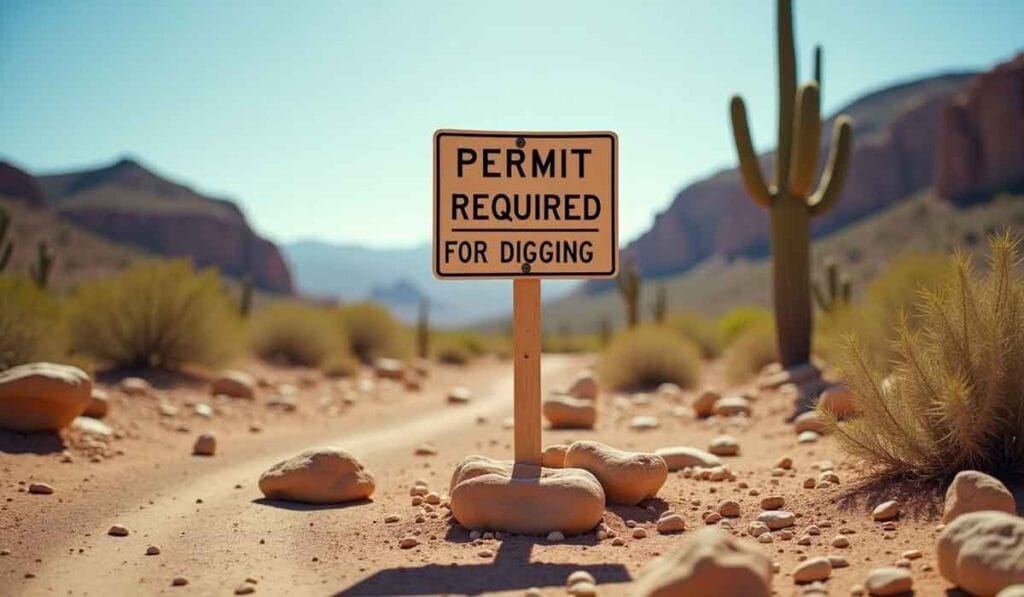
Check your local rules before starting any trenching work.
Arizona often requires permits for digging, especially in rocky soil.
Failing to get the right approvals can lead to fines or delays.
Follow all local building codes and consider an environmental impact assessment.
This ensures you protect nearby ecosystems and stay within regulations.
Always contact a one-call center, like 811, to mark underground utilities before excavating.
Conclusion
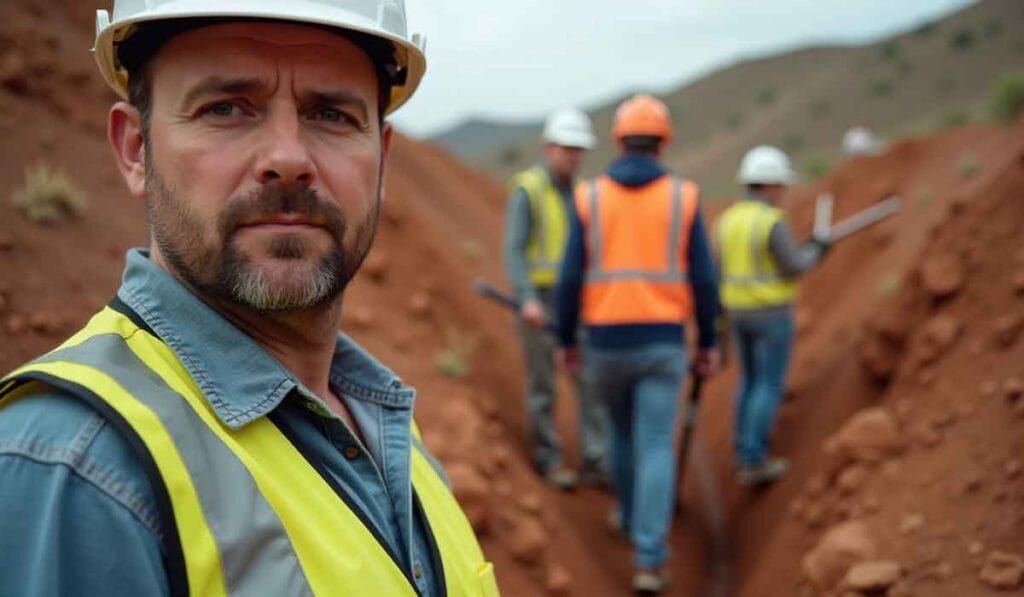
Trenching in Arizona’s rocky soil comes with challenges, but safety must always be first.
To avoid accidents, use the right tools and follow the required guidelines.
Focus on proper equipment use and protective measures for deep trenches.
Stay informed about legal rules to protect yourself and your property.
A careful approach makes the process safer and smoother for everyone involved.
If you have a job and need help, hiring a professional trenching contractor is your best bet.
FAQs
1. Why is trenching safety important in Arizona’s rocky soil?
Trenching safety is critical because Arizona’s rocky soil can be unstable, increasing the risk of cave-ins and equipment accidents.
2. What challenges does rocky soil create for trenching work?
Rocky soil makes digging harder, slows progress, and can cause machinery to malfunction or workers to face unexpected hazards.
3. How can workers stay safe while trenching in tough conditions like these?
Workers should follow strict protocols, use proper protective gear, secure trenches with support, and always inspect the site for risks.
4. Are there specific tools recommended for trenching in rocky areas?
Using heavy-duty digging equipment designed for hard terrain helps ensure efficiency and reduces danger during operations.
